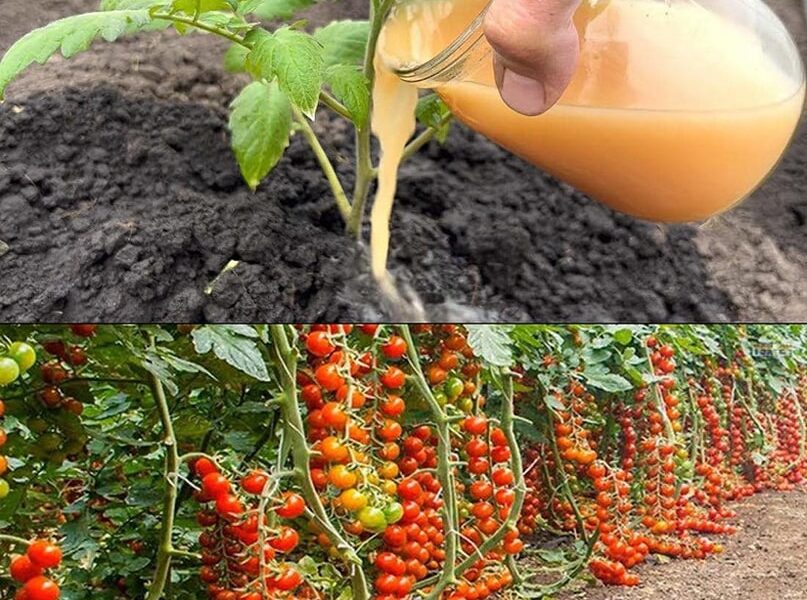04.03.2024
Improve your tomato yield with natural dressings
Tomatoes, beloved in many gardens, thrive with proper care and nutrition. Innovative top dressing methods, made from natural ingredients, aim to strengthen tomato plants, promoting robust growth and abundant yields.
The power of milk or whey
1. Nutrient-rich mix

Using milk or whey provides a powerful mixture rich in nutrients crucial for plant growth:
- Essential elements such as nitrogen, potassium, calcium, magnesium, iron and phosphorus.
- The lactic acid bacteria present in these dairy products release nutrients and suppress plant diseases.
2. Application technique
- Applying a dilute solution to the soil encourages healthy root development and overall plant growth.
- Foliar spraying forms a protective film that protects against diseases such as late blight on tomatoes and downy mildew on cucumbers.
Fusion of yeast and tomato paste
1. Biologically active fusion
A mixture of yeast, tomato paste or spoiled jam supplements the soil with beneficial compounds:
- Yeast, rich in active substances, vitamins and amino acids, promotes vigorous root growth.
- The tomato paste further enriches the mixture.
2. Preparation and Application
- The fusion of warm water, yeast and tomato paste, which is left to ferment, becomes a powerful elixir.
- Application as a root drench benefits early stage seedlings, ensuring faster root establishment and robust growth.
Application for success
1. Timing and frequency
- Milk or whey-based top dressing: Administer 2-3 times during the growing season, beginning 10-14 days after sowing and continuing throughout fruiting.
- Periodic foliar sprays (every 7-10 days) act as a preventive shield against diseases.
2. Optimal application
- Yeast and Tomato Paste Fusion: Best applied within the first few days after planting seedlings in warm water.
- Proper dilution and use of warm water during application are crucial for optimal results.

Incorporating these natural dressings significantly improves tomato growth, promoting healthier plants and a more abundant harvest. Experimentation with these methods reveals first-hand their notable benefit
